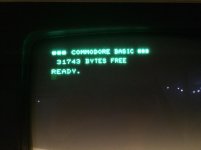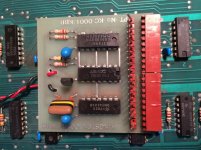After colouring and marking the layout of my board I gave myself a crash reminder in 6502 assembler after finding the disassembly of BASIC4 on Zimmers' site, figuring that the init routines would be identical. It writes to some store registers right at the beginning of zero page memory ($00 upwards) then copies some ROM code there and executes it. Later it writes to BASIC memory and increases addresses doing write/compare to see how much RAM it has available then jumps to the routine that displays the COMMODORE BASIC message and bytes free. Unfortunately there's no error checking because why would there be so I can see it looping infinitely if it can't write to memory.
Today I discovered I'd used a 74LS04 where I should've used a 74S04 and was told the timings are vastly different between the two, like 10ns as opposed to 2ns propagation which could make a difference between a working and non-working machine. Cheers Dave, new 74S04 on order as well as a 74S74 for RAS0 because they're the only two 'S' series chips that control memory refresh.
I also got a needle nosed soldering tip the other day so managed to fix the circuit board of this machine's keyboard that had 16 broken tracks where something heavy had dropped on it in the past. Getting there....slowly.....
W


